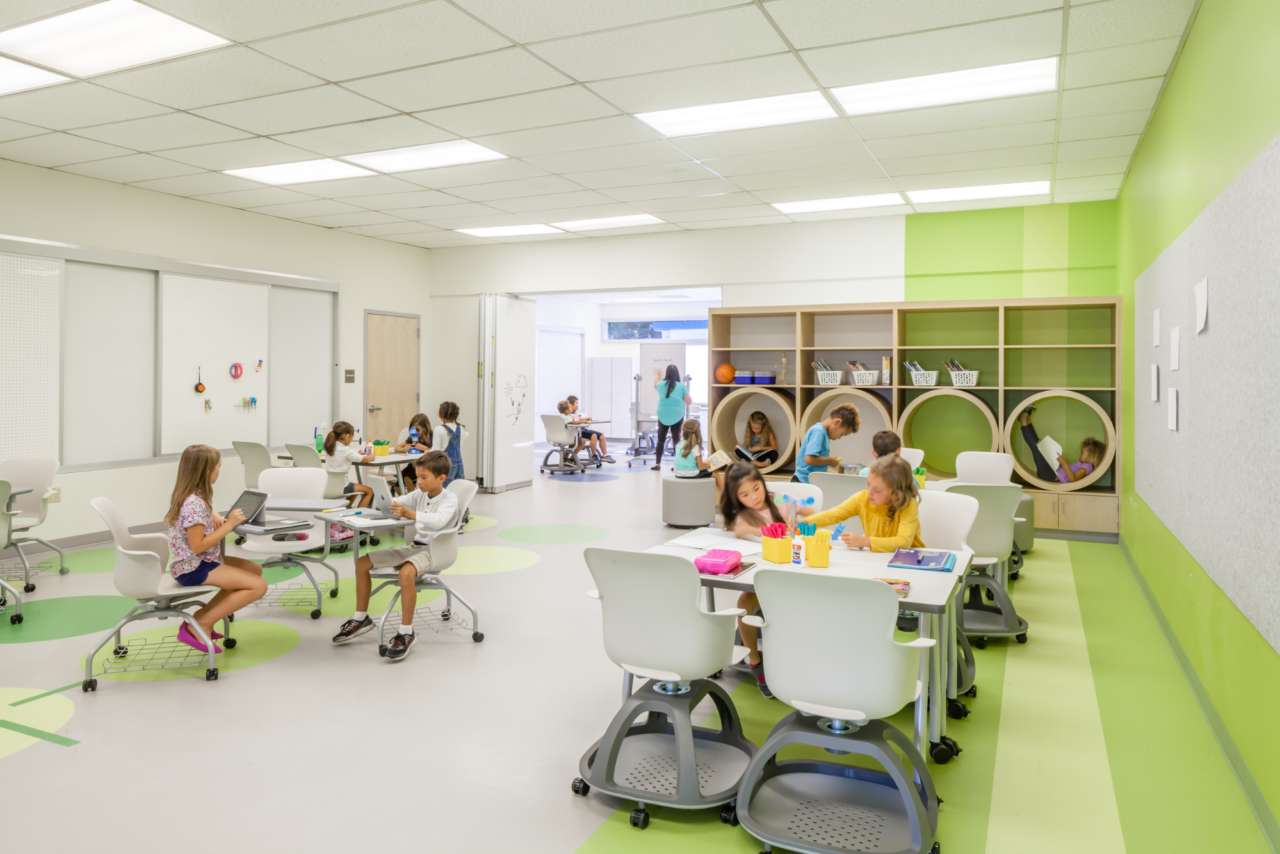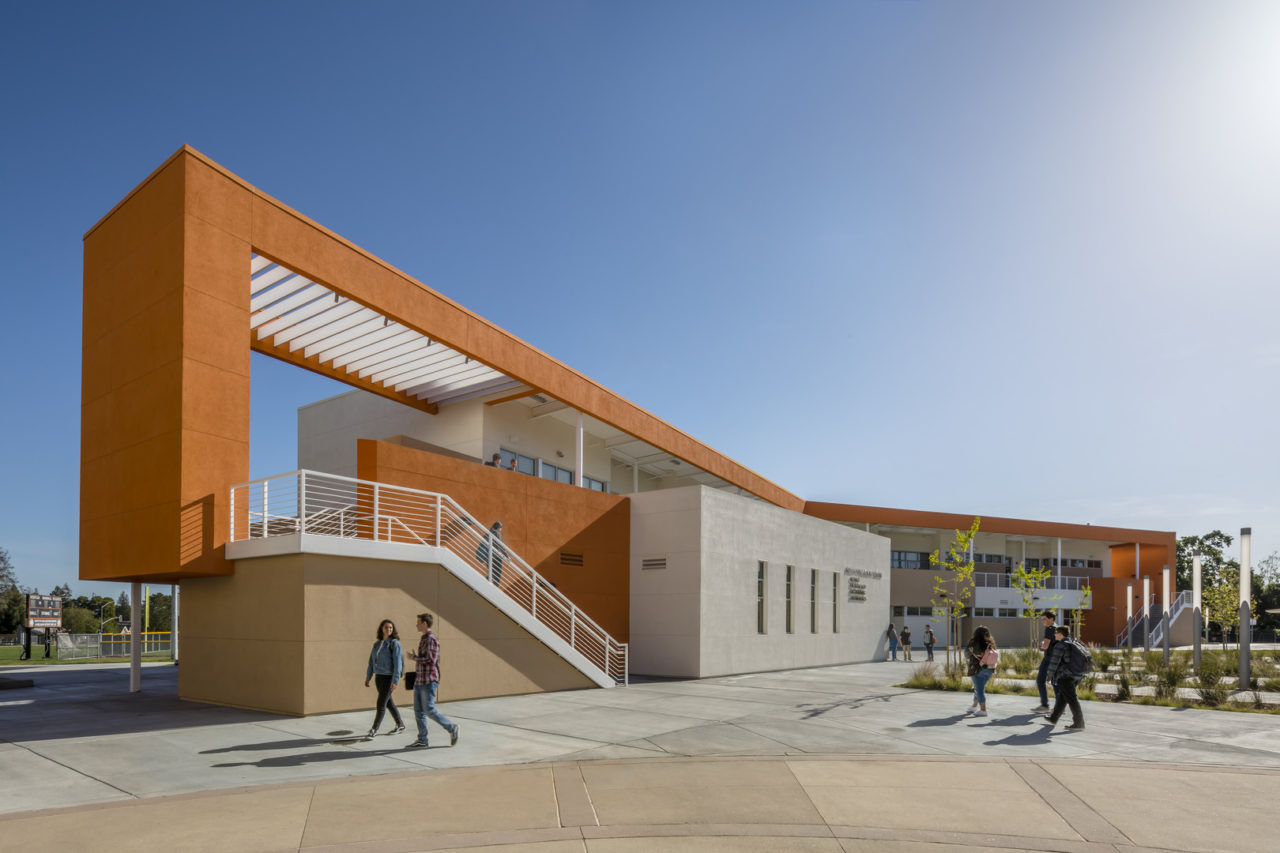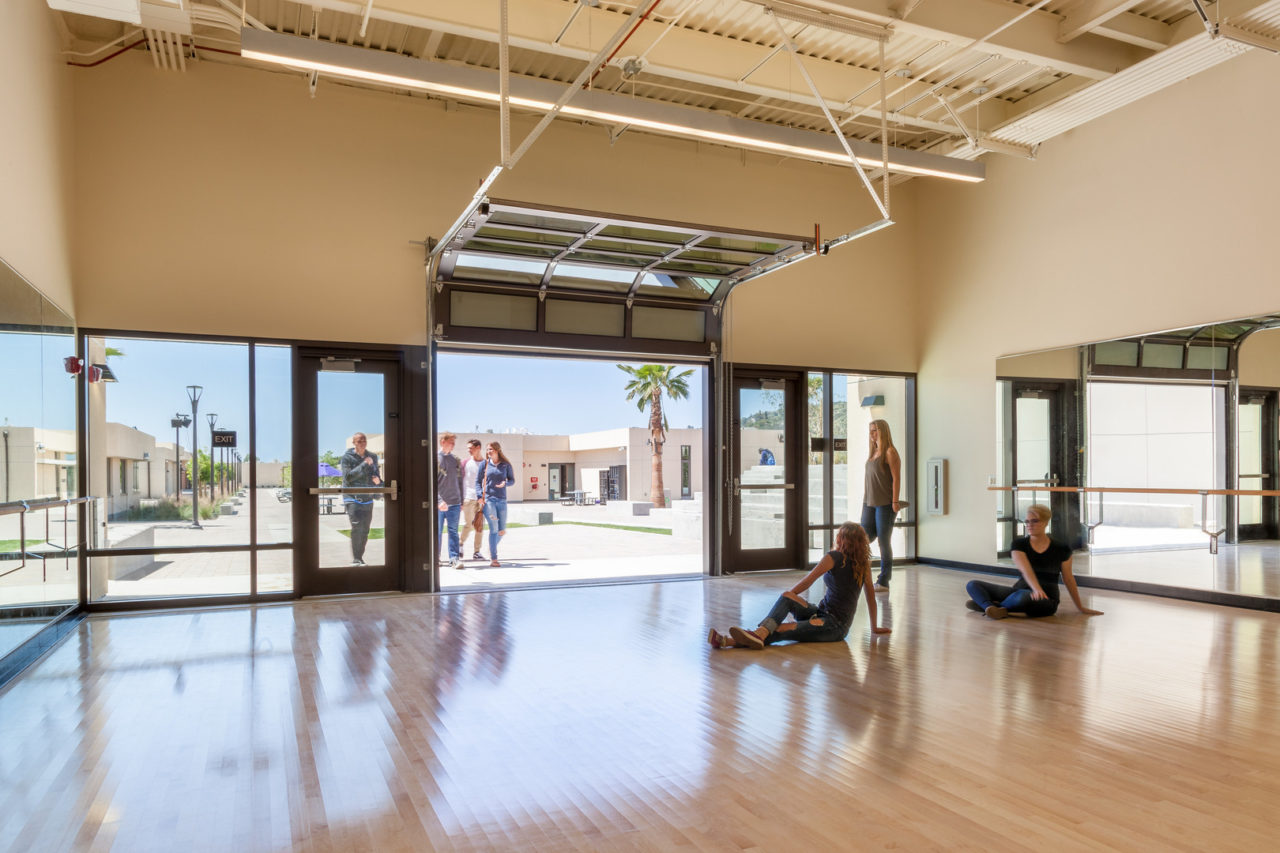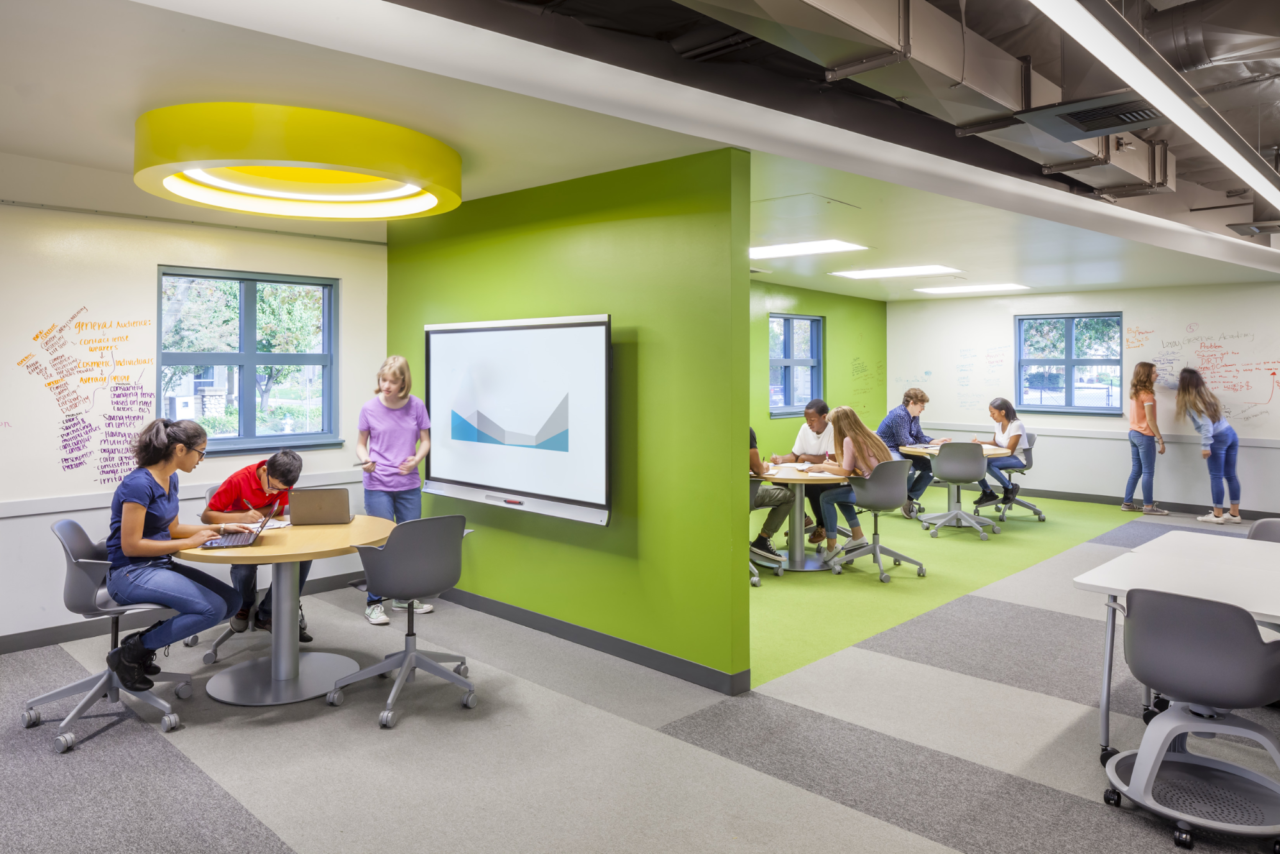It’s a common misconception that school architecture has remained static over the years. In fact, pre K-12 school design trends have been quietly shifting our perception of the education system. Instead of a cookie-cutter, government-budgeted approach, many districts are investing in more flexible learning spaces. This is a stark contrast to a more outdated “cells and bells” model. At HMC Architects, it’s apparent how a well-designed learning environment can positively impact today’s students through personalization and empathetic thinking. Many pre k-12 school design trends are changing the future of learning as we know it.
The Goals of 21st Century Pre K-12 Education
One of the biggest trends we’re seeing now in education is the real need to focus on students’ social and emotional well-being and development, just as much as we focus on intellectual development. It’s becoming apparent that a large portion of young children have already been exposed to significant trauma, which impacts their learning and social development.
To better support students both on an intellectual and an emotional level, educators focus on the following goals:
- Recognizing diversity: Not all students learn the same way. Neurodiversity, varying learning styles, differing cultural backgrounds, and the resources or adult interaction students get at home all impact how students learn. Students need personalized learning opportunities that support and celebrate these differences.
- Creating boundaryless learning spaces: More teachers realize that learning can and should take place outside of the traditional classroom environment. There should also be greater collaboration between the wider community and pre K-12 students. Creating learning spaces in-between classrooms like outdoor labs, recreation centers, and places for the community to gather is a great way to encourage 24/7 learning.
- Enhancing digital fluency: Technology plays an important role in the lives of modern students. Teaching students how to adapt to new technology and use it in a safe and healthy way is absolutely essential.
- Encouraging curiosity: Rote learning is outdated and ineffective. Today’s teachers want students to engage more with the material and think critically. They need spaces that allow them to experiment, express their creativity, and ask questions.
- Promoting sustainability: Sustainable schools not only save energy and money for school districts, but they also teach students to be good environmental stewards. Students learn concepts like immediate vs. long-term gratification and can also develop an interest in fields of study related to sustainability and the environment.
- Creating a portal to the real world: Students crave hands-on experience and real world applications of the concepts they learn. When they can see how concepts apply to them, they’re more likely to remember the information and have a thirst for knowledge.
The latest pre K-12 school design trends support each of these goals. By leveraging these trends, experienced architects design school buildings that are future-ready while also enhancing the district’s academic integrity. This in turn leads to greater student happiness and academic success.
 How Architects Use Pre K-12 School Design Trends to Support Educational Goals
How Architects Use Pre K-12 School Design Trends to Support Educational Goals
To achieve all of these complex goals, architects must adapt their designs to make classrooms more functional and emotionally supportive. Some of the most important pre K-12 school design trends we focus on are:
Creating Flexible Spaces
Instead of thinking of spaces as “cells” to hold students until a bell rings, it’s important to foster interaction and collaboration. This can include creative classroom seating that’s easily reconfigured or movable walls that allow teachers to create breakout spaces for learning.
Spaces should also support all learning styles. It is important to incorporate small quiet spaces with larger spaces for group work. For example, at Orange Glen Elementary School in the Escondido Union School District we focused on creating cozy corners that allow students to tuck away, getting quiet time to learn and feel safe during the school day. But we also created large, collaborative workstations for group projects to encourage students to interact more with their peers. By treating every classroom as though it is a makerspace, it allows for more varied uses.
Another essential pre K-12 school design trend is the use of blended learning spaces. Rather than creating separate spaces for students who need extra support or resources, we incorporate these needs into every room. For example, students who use assistive technology can charge their devices from virtually any location in the classroom from outlets embedded in furniture and tables. This helps them feel less isolated from their peers.
Incorporating Biophilic Design Principles
The outdoors have a beneficial effect on student happiness and learning. This is why many schools are incorporating outdoor learning labs and other biophilic design principles. For example, Rancho Campana High School in Camarillo, California leans into these biophilic solutions by grouping classrooms around common greens, and incorporating whole walls that open up to them, allowing for learning that spills out into nature.
Outdoor labs also expand the instructional space and keep students engaged by allowing them more room to move about. Community teaching gardens, outdoor makerspaces, open air seating areas, and weatherproof whiteboards enable teachers to move their lessons outside or even center lessons around environmental topics.
 Integrating Technology Into Classrooms
Integrating Technology Into Classrooms
Digital fluency is an important skill that today’s students must learn in order to grow into successful adults. This means learning how to use technology—and not letting technology use them.
One of the most exciting pre K-12 school design trends is the use of gaming, virtual reality, and coding learning spaces in the curriculum. Architects provide comfortable spaces where students can use laptops anywhere, not just in designated computer labs. Architects also design spacious educational gaming and VR rooms.
Blended “makerspaces” that connect technology with creativity are also a must-have in modern schools. These makerspaces encourage students to invent new concepts and express themselves. A makerspace could include features like desktop computers, large work tables, hand or power tools with a variety of medium for creations, 3D printers, and think tank rooms that drive creativity and collaboration. Architects strive to make every classroom a makerspace.
These are just a few of the many pre K-12 school design trends that architects incorporate into modern school buildings. Experienced architectural firms also take into consideration the unique needs of the community, teachers, administrators, and students who will ultimately use the space. Different schools will carry a different set of goals, desires, and design challenges, all of which need to be in service of the broad needs of the learners occupying the building. This is why it’s important to hire an architectural firm that understands your community culture and your students.
 HMC Celebrates Student Success and Well-Being
HMC Celebrates Student Success and Well-Being
At HMC Architects, we have our fingers firmly on the pulse of pre K-12 school design trends. We know that every district and every learning space has unique goals and needs. It’s our aim to turn those goals and needs into a design that prioritizes functionality without sacrificing any of the form. We meet directly with school administrators, teachers, trusted community members, and students to discuss their visions for the space. Then, using our years of experience and in-depth knowledge of pre K-12 school design trends and considerations, we translate that collective stakeholder vision into buildings that exceed expectations.Our buildings not only facilitate student learning—they help even the most vulnerable students feel nurtured and validated.




